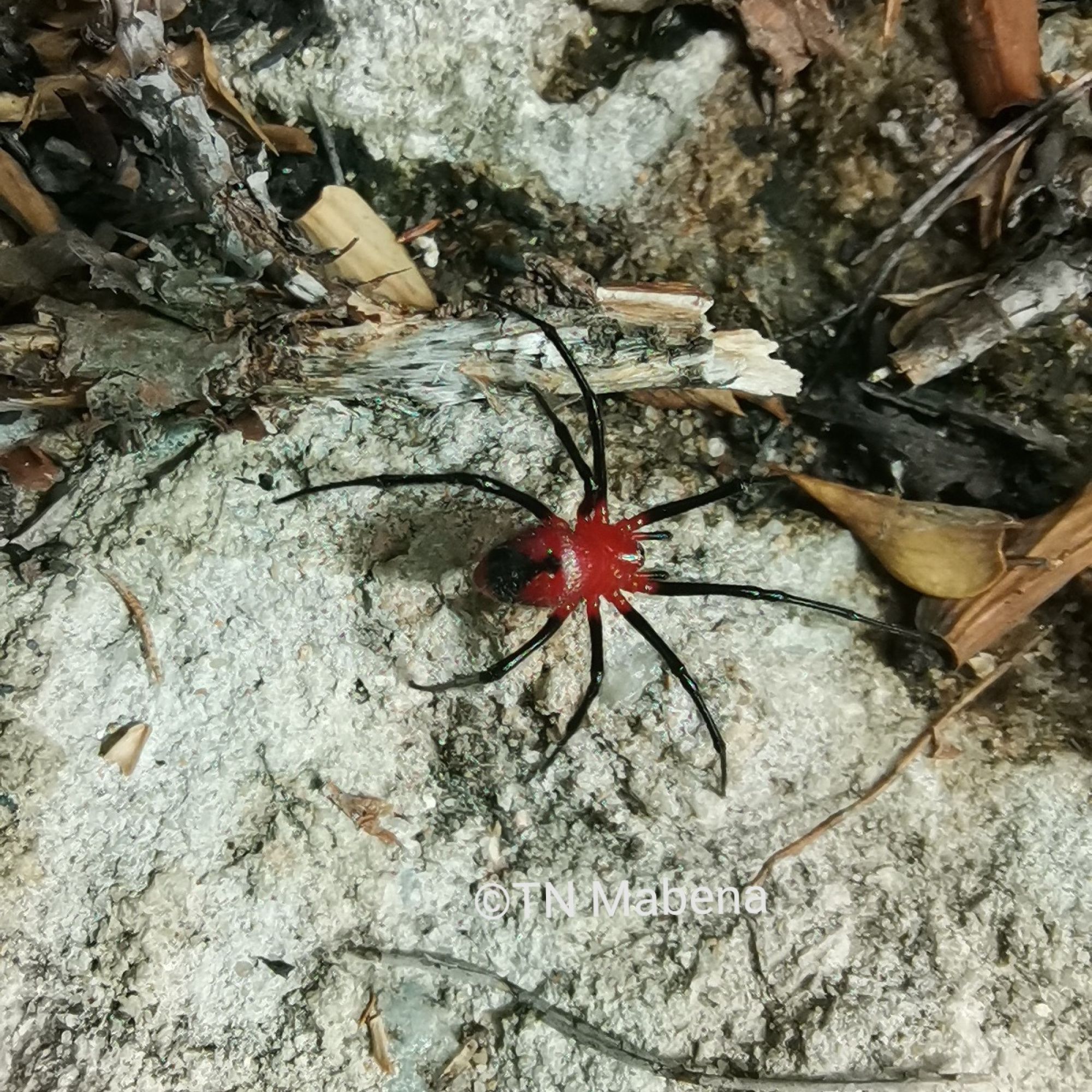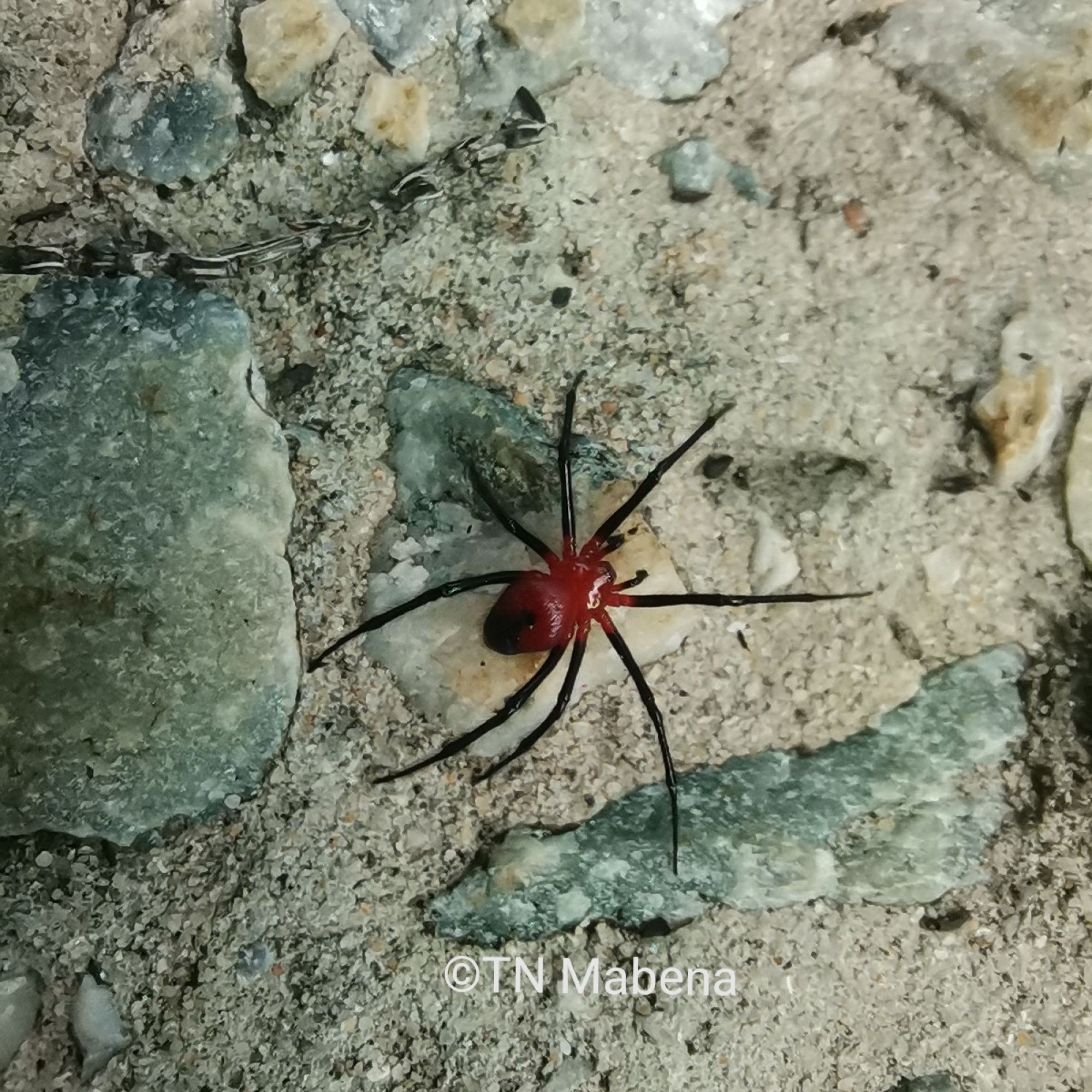
Strawberry Button Spider
An exciting, new spider record was collected from the Kammanassie Nature Reserve, which is also a listed World Heritage Site of international importance. The Kammanassie Field Rangers observed a vivid red spider while assisting researchers from the University of Antwerp’s Department of Biology with field work at the Mannetjiesberg Mountain. The arachnid was noted while assisting Dr Genevieve Diedericks and her students looking for crag lizards (Hemicordylus capensis) in the area. The spider was photographed just below the foothills of Mannetjiesberg on 23 March 2022.
Using the photographs to look for distinctive features, the Field Rangers attempted to identify the species using guidebooks, but without success. One of the Field Rangers, Thandeka Mabena, utilised Google search, using the spider’s features as keywords (“bright red, black, spider, Western Cape”) and found an article, “New spider species discovered on Table Mountain National Park” published by ‘Cape Town ETC’ magazine dated 15 July 2020. The article link, together with the spider pictures were sent to the Landscape East Ecological Co-Ordinator, Natalie Baker, to further assist with identification.
According to the article, the Table Mountain spider has yet to be taxonomically classified but for the time being it is called the strawberry button/strawberry spider. CapeNature’s researchers have assisted with the identification process and liaised with the Agricultural Research Council’s specialists to confirm the species. The consensus among the researchers was that it is potentially a new species of the Family Theridiidae which may be related to the strawberry button spider as previously mentioned. This new record means that the Field Rangers would need to collect more specimens to send to spider specialists to analyse its DNA and confirm the taxonomic status of this new record as either a strawberry button spider or a new species. In the latter case, more specimens from the Kammanassie Nature Reserve will contribute to the classification process, a win for biodiversity.

Photo taken by Thandeka Mabena

Photo taken by Thandeka Mabena
How can I assist you today?
How can I assist you today?